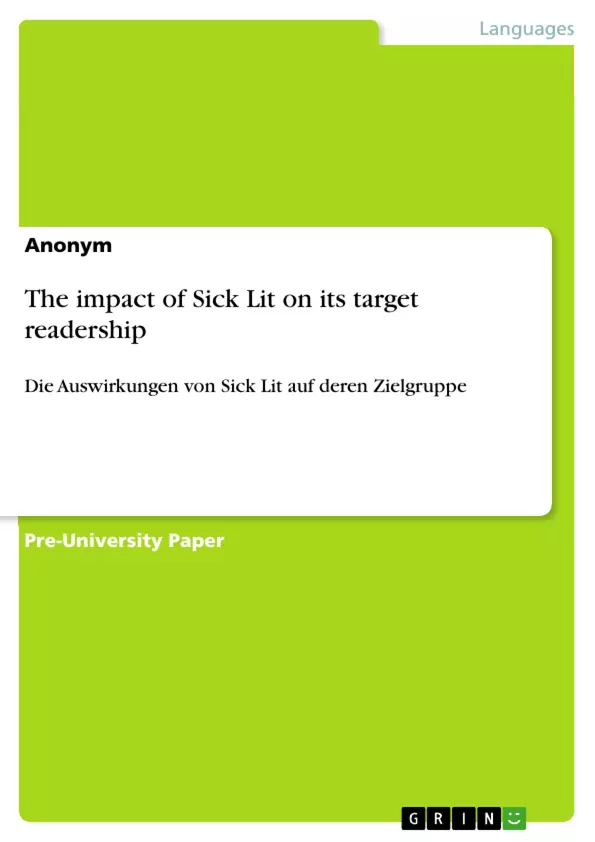This paper focuses on a specification of the wide topic “Sick Lit”, which is the abbreviated form of “sick literature”. It is defined as literature featuring sick children, written for children. With literary works – such as The Fault in Our Stars by John Green – gaining popularity, questions may arise. The relevance of this paper is to determine the impact of such books on their target readership. Due to the impossibility of covering every book under this subgenre, specific literature has been picked. Aside from the coverage of the subgenre’s history, experts and readers are cited. Additionally, the psychological theory of adolescents’ understanding and perceptions of death is provided. After months of research, it was therefore possible to state that even multiple experts’ opinions differ. While some appeal to the authors’ responsibility or are concerned about the literature being harmful for its readers, others view “Sick Lit” as a form of education.
Table of Contents
- Introduction
- Theoretical Principles
- Synopsis of The Fault in Our Stars by John Green
- History of the Genre
- History of the term "Sick Lit"
- Impact of The Fault in Our Stars
- What experts think of the genre
- What readers think of The Fault in Our Stars
- Further representative examples of Sick Lit
- Synopsis of The Perks of Being a Wallflower by Stephen Chbosky
- Synopsis of Five Feet Apart by Rachael Lippincott
- Adolescents' understanding and perceptions of death
Objectives and Key Themes
This paper aims to provide a comprehensive analysis of "Sick Lit," a subgenre of Young Adult fiction that features stories about sick children. The paper explores the historical context of the term "Sick Lit," examines the impact of prominent works like "The Fault in Our Stars," and analyzes the perspectives of both experts and readers. It also delves into the psychological aspects of how adolescents perceive death and illness.
- The definition and history of "Sick Lit" as a subgenre of Young Adult fiction.
- The impact of "The Fault in Our Stars" and other significant Sick Lit works on readers.
- The perspectives of experts, including authors, psychiatrists, and psychologists, on the genre.
- The role of Sick Lit in addressing complex topics such as death, illness, and suicide.
- Psychological insights into adolescents' understanding and perceptions of death and illness.
Chapter Summaries
The introduction presents the aim of the paper, which is to provide a thorough understanding of "Sick Lit" and its impact on readers. It explains the paper's structure and outlines the topics covered in each chapter. The chapter on Theoretical Principles defines "Sick Lit" and explores its place within the Young Adult fiction genre. The chapter on "The Fault in Our Stars" offers a synopsis of the novel and its impact on the development of the Sick Lit subgenre.
The following chapter examines the history of the term "Sick Lit," tracing its origins and evolution. This is followed by a discussion of the impact of "The Fault in Our Stars" on readers and its contribution to the genre's popularity. The paper then delves into the opinions of experts, including authors, psychiatrists, and psychologists, on "Sick Lit" and its potential effects on young readers. The final chapter before the conclusion explores how adolescents perceive and understand death and illness, drawing on psychological theories and insights.
Keywords
The primary keywords and focus topics of this work include "Sick Lit," "Young Adult fiction," "death," "illness," "suicide," "adolescents," "psychological perspectives," "literature," "impact," "readers," and "experts."
- Quote paper
- Anonym (Author), The impact of Sick Lit on its target readership, Munich, GRIN Verlag, https://www.grin.com/document/1243611



